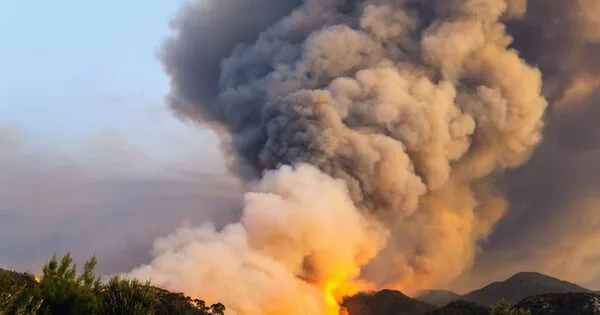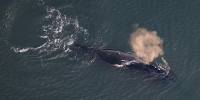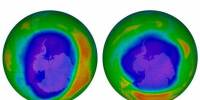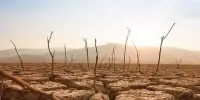Smoke particles from wildfires can contribute to the depletion of the ozone layer, but their impact on this process is relatively small compared to other human activities, such as the release of chlorofluorocarbons (CFCs) and other ozone-depleting chemicals. The ozone layer is a protective layer of gas in the Earth’s stratosphere that absorbs most of the Sun’s ultraviolet (UV) radiation. This layer is important for protecting life on Earth, as exposure to high levels of UV radiation can cause skin cancer, damage crops, and harm marine life.
According to a new study, smoke particles in the stratosphere can cause chemical reactions that deplete the ozone layer, and smoke particles from Australian wildfires widened the ozone hole by 10% in 2020.
A wildfire can send smoke into the stratosphere, where it can linger for up to a year. According to a new MIT study, these particles can cause chemical reactions that erode the protective ozone layer that protects the Earth from the sun’s harmful ultraviolet radiation while suspended there.
The study, which will be published in Nature, focuses on the smoke from the “Black Summer” megafire that burned in eastern Australia from December 2019 to January 2020. The fires, which were the most destructive on record in the country, scorched tens of millions of acres and released more than a million tons of smoke into the atmosphere.
The MIT team discovered a new chemical reaction by which smoke particles from Australian wildfires exacerbated ozone depletion. The fires likely contributed to a 3-5 percent depletion of total ozone at mid-latitudes in the southern hemisphere, overlying Australia, New Zealand, and parts of Africa and South America by triggering this reaction.
It’s the aged smoke particles that really take up a lot of the HCl. And then you get, amazingly, the same reactions that you get in the ozone hole, but over mid-latitudes, at much warmer temperatures.
Susan Solomon
According to the researchers’ model, the fires also had an effect in the polar regions, eating away at the edges of the ozone hole over Antarctica. By late 2020, smoke particles from Australian wildfires had widened the Antarctic ozone hole by 2.5 million square kilometers, or 10% of its original size.
It’s unclear what effect wildfires will have on ozone recovery in the long run. The United Nations recently reported that the ozone hole and global ozone depletion are on the mend, thanks to a concerted international effort to phase out ozone-depleting chemicals. However, according to the MIT study, as long as these chemicals remain in the atmosphere, large fires could cause a reaction that temporarily depletes ozone.
“The Australian fires of 2020 were really a wake-up call for the science community,” says Susan Solomon, the Lee and Geraldine Martin Professor of Environmental Studies at MIT and a leading climate scientist who first identified the chemicals responsible for the Antarctic ozone hole. “The effect of wildfires was not previously accounted for in [projections of] ozone recovery. And I think that effect may depend on whether fires become more frequent and intense as the planet warms.”
The study is led by Solomon and MIT graduate student Peidong Wang, along with collaborators from the Institute for Environmental and Climate Research in Guangzhou, China, the National Oceanic and Atmospheric Administration, the National Center for Atmospheric Research, and Colorado State University.
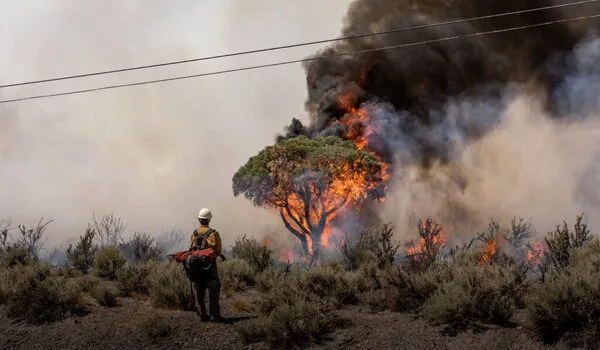
Chlorine cascade
The new research builds on Solomon and her colleagues’ 2022 discovery of a chemical link between wildfires and ozone depletion. The researchers discovered that chlorine-containing compounds, which were previously emitted by factories as chlorofluorocarbons (CFCs), could react with the surface of fire aerosols. This interaction, they discovered, triggered a chemical cascade that resulted in chlorine monoxide, the ultimate ozone-depleting molecule. Their findings indicated that the Australian wildfires likely depleted ozone via this newly discovered chemical reaction.
“But that didn’t explain all the changes that were observed in the stratosphere,” Solomon says. “There was a whole bunch of chlorine-related chemistry that was totally out of whack.”
The new study looked at the composition of molecules in the stratosphere after the Australian wildfires. They examined three independent sets of satellite data and discovered that in the months following the fires, concentrations of hydrochloric acid dropped significantly at mid-latitudes, while chlorine monoxide increased.
As CFCs degrade naturally, hydrochloric acid (HCl) accumulates in the stratosphere. As long as chlorine is bound in the form of HCl, it has no chance of destroying ozone. However, if HCl disintegrates, chlorine can react with oxygen to form ozone-depleting chlorine monoxide.
When HCl interacts with the surface of cloud particles at frigid temperatures of about 155 Kelvin in the polar regions, it can break apart. This reaction, however, was not expected to occur in the mid-latitudes, where temperatures are significantly higher.
“The fact that HCl at mid-latitudes dropped by such a large amount was a warning sign to me,” Solomon says. What if, at warmer temperatures, HCl could also interact with smoke particles, releasing chlorine to destroy ozone? If such a reaction were possible, it would explain the molecule imbalance and much of the ozone depletion observed in the aftermath of the Australian wildfires.
Smoky drift
Solomon and her colleagues combed the chemical literature for organic molecules that could react with HCl at higher temperatures to break it down. “I discovered that HCl is extremely soluble in a wide range of organic species,” Solomon says. “It likes to cling to a variety of compounds.”
The question then became whether the Australian wildfires released any of the compounds that could have caused HCl breakup and subsequent ozone depletion. When the team examined the composition of smoke particles in the days following the fires, the picture was far from clear.
“I looked at that stuff and threw up my hands and thought, there’s so much stuff in there, how am I ever going to figure this out?” Solomon recalls. “But then I realized it had actually taken some weeks before you saw the HCl drop, so you really need to look at the data on aged wildfire particles.”
When the team expanded their search, they found that smoke particles persisted over months, circulating in the stratosphere at mid-latitudes, in the same regions and times when concentrations of HCl dropped.
“It’s the aged smoke particles that really take up a lot of the HCl,” Solomon says. “And then you get, amazingly, the same reactions that you get in the ozone hole, but over mid-latitudes, at much warmer temperatures.”
When the researchers incorporated this new chemical reaction into an atmospheric chemistry model and simulated the conditions of the Australian wildfires, they discovered a 5% depletion of ozone in the stratosphere at mid-latitudes, as well as a 10% widening of the ozone hole over Antarctica.
The reaction with HCl is most likely the primary mechanism by which wildfires deplete ozone. However, Solomon believes that there may be other chlorine-containing compounds floating in the stratosphere that wildfires could ignite.
